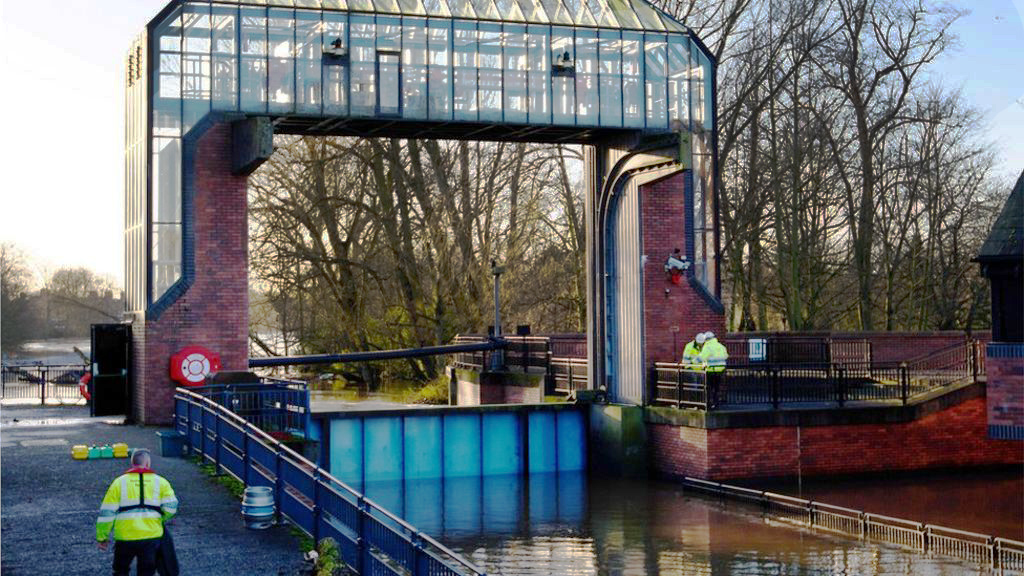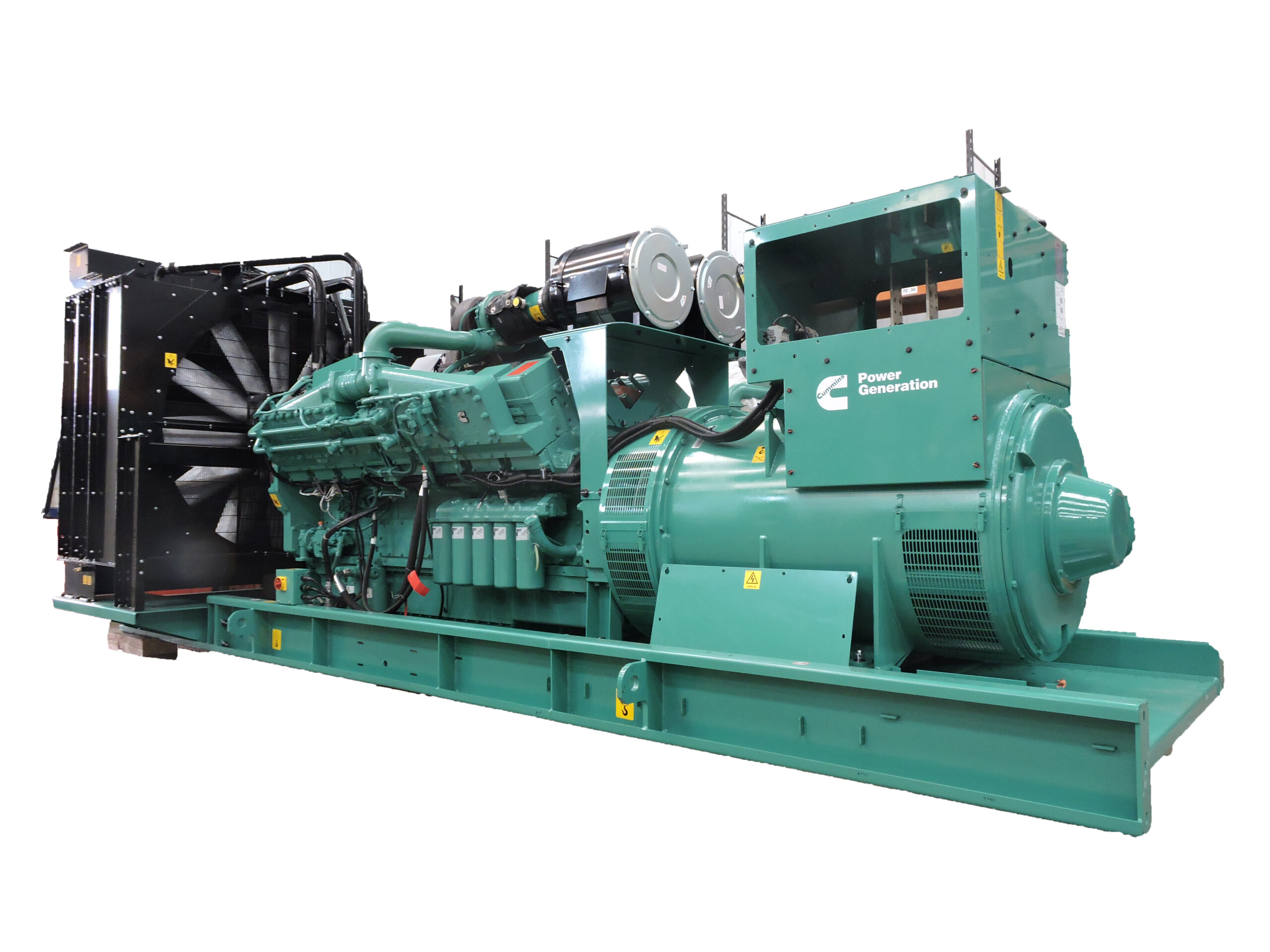Foss Barrier
Download PDFProduct
Cummins 4 x 1675kVA
Purpose
To provide emergency back up power
Primary Choice Factor
YorPower demonstrated their design and manufacturing capability to deliver proven high quality gensets.
Summary
The River Foss flood alleviation scheme consists of a floodgate coupled with a pumping station straddling the River Foss at its confluence with the River Ouse in York, just south of the city centre. The scheme was opened in 1988 after flooding from the Foss and two other becks caused more damage to properties in the city than when the Ouse was in flood. The purpose of the barrier is to prevent floodwater from backing up from the Foss when it meets the surge water of the Ouse and cannot drain away. The pumps adjacent to the barrier move water from the River Foss into the River Ouse.
Background
The barrier weighs more than 16 tonnes and is operated as a turnover lift gate. When open it is held horizontally above the river so that boats and barges may pass underneath whilst regular and efficient maintenance may also be performed.
Operation
The electrically driven barrier takes four minutes to lower into position. Eight electrically driven pumps transfer a massive amount of water from the River Foss into the River Ouse through a side culvert. These pumps maintain the water level of the Foss at around 6.5 metres. When the flood subsides and the level of the Ouse drops to 6.5 metres, the levels in both rivers are equalised and the barrier may be opened.
Recent Events
Following severe flooding on Boxing Day in December 2015 the decision was taken to upgrade the capacity of the pumps and to install new generators on top of the structure to ensure that the barrier and pumps could be operated, even if floodwater caused a mains power failure.
The Future
The Environment Agency has said that the new pumps will be 25% more powerful than the old ones, capable of moving over 40 cubic metres of water per second compared with the 30 cubic metres a second of the old pumps. The Environment Agency said: “Normally, this type of work would take three to four years to carry out but we are looking at doing it in two.”
Standby Generators
Standby generators are required to power the pumps (and the pump station house loads) for a varying loading condition from one pump operating at minimum speed up to 8 pumps running at up to full load. A smaller standby generator is also required to support the pump station house loads in the event of a loss of mains power when the pumps are not require to run. The generator equipment is being located on a raised platform, above flood level, and adjacent to the main electrical plantroom of the pump station.
Procurement
When looking for a supplier for the new generators the Environment Agency’s main contractor, J.N. Bentley, invited tenders from all the major suppliers in the UK. YorPower, working closely with Cummins, demonstrated their design and manufacturing capability to deliver proven high quality gensets, within the deadline required and importantly to, or above, the stringent specification set. YorPower, who are based less than 20 miles from the centre of York, have senior system designers dedicated to the project working closely with the Bentley team. The YorPower special projects division and engineering team will be installing and commissioning the sets on site.
YorPower MD, Ian Thompson, said “We are naturally delighted to be awarded this prestigious contract and it demonstrates our capability and strength in depth when it comes to standby power engineering. What was particularly pleasing was that YorPower, a leading independent diesel generator specialist, won the contract in a very competitive environment and against all of the major players in the industry including CAT, FG Wilson and SDMO. The combined approach and strategy to partner with Cummins played a major part in winning the confidence of the main contractor and design team, CH2M.”



